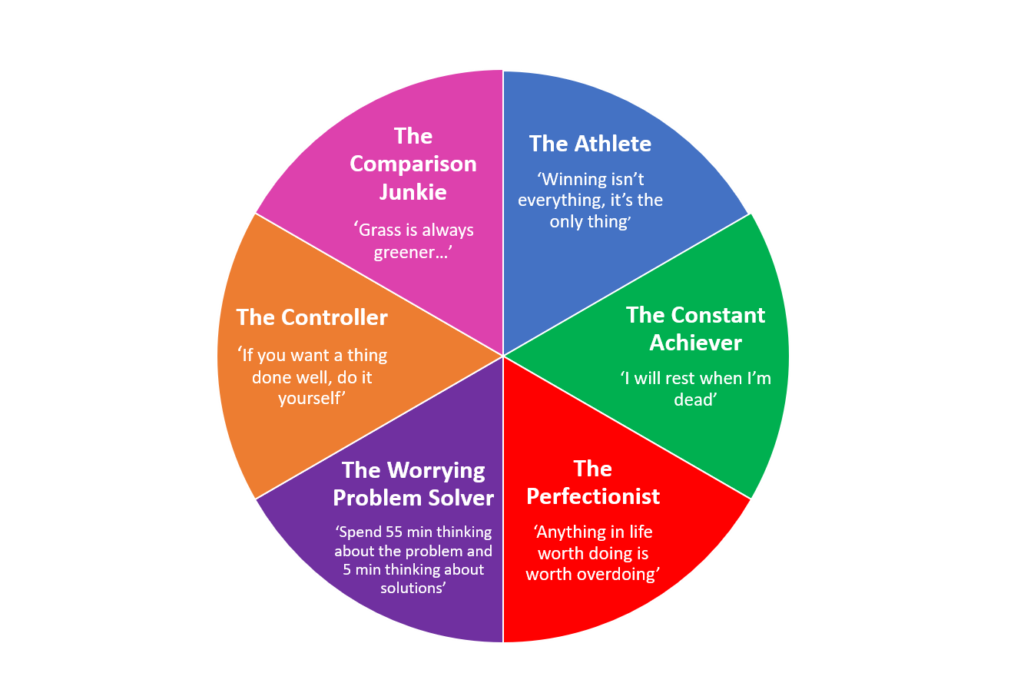We’ve come the end in our series Achievement patterns and strategies with the Comparer.
The Comparer lives by the words: ‘The grass is always greener… ’.
Comparison is nothing new. In 1954 Festinger came up with the social comparison theory. At the core of his theory is the idea that people come to know about themselves—their own abilities, successes, and personality—by comparing themselves with others. It’s central to our need for acceptance and belonging.
But the Comparer archetype takes this behaviour to the extremes. Comparers have a clear view of what life should be like and constantly compare themselves to others. They make sure their Instagram feeds are perfectly color coded and are at risk of being addicted to social media.
 As a Comparer you also want to be perfect IRL and try to say clever things, be helpful and serve the right food at dinner parties. If people around you are unwell you risk missing the signs and often don’t observe your own signals of stress either.
As a Comparer you also want to be perfect IRL and try to say clever things, be helpful and serve the right food at dinner parties. If people around you are unwell you risk missing the signs and often don’t observe your own signals of stress either.
Drivers and Fears:
-
-
- Low self-esteem
- Fear of being abandoned
- Fear of rejection
-
How to overcome:
-
-
- Do a Social media detox – really! Here are a few tips:
-
-
- a) Give your digital devices a bedtime.b) Start a new morning habit.c) Delete your social media apps.
d) Replace social media time with a new hobby or activity.
e) Break the habit of reaching for your phone.
f) Use technology for reasons other than scrolling social media.
g) Pay attention to the media you consume.
h) Spend more time observing the world around you.
i) Track your progress.
j) Set yourself reminders to not check social media.
-
-
- Do a Social media detox – really! Here are a few tips:
-
- 2. Learn to spot the bottom of the iceberg. When you find yourself comparing, turn the tables around and ask yourself what the other person might admire in you. We can never really understand someone else’s reality, struggles and insecurities just as they might not have all your strengths in sight.3. Practice Meditation
-
Ok, so those were the 6 (over)achievement archetypes.
I use this model a lot in my coaching practice and it’s central to the Achievement Detox program. Often clients tell me that they can relate to several archetypes but when looking into the driver and fears it often becomes clear which overachievement strategy they use the most.
And that’s where we focus in with behavioural experiments.
Because as with all behavioural change, we need to work through the 3As:
-
-
- First we need to be AWARE of our behaviours and cognitions
- Then we need to ACCEPT the situation
- But nothing will change unless we ACT – we need to try and evaluate new strategies and slowly build new behaviours.
-
I hope you have enjoyed the series. If you would like more information or would like to work with me as a coach, please Get in touch








